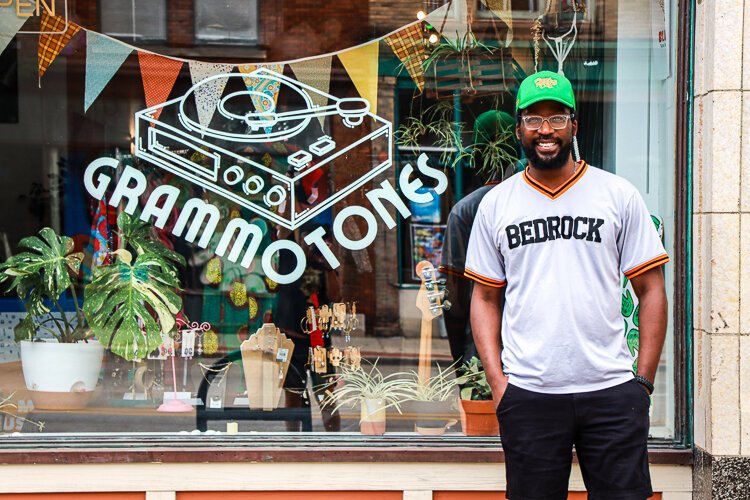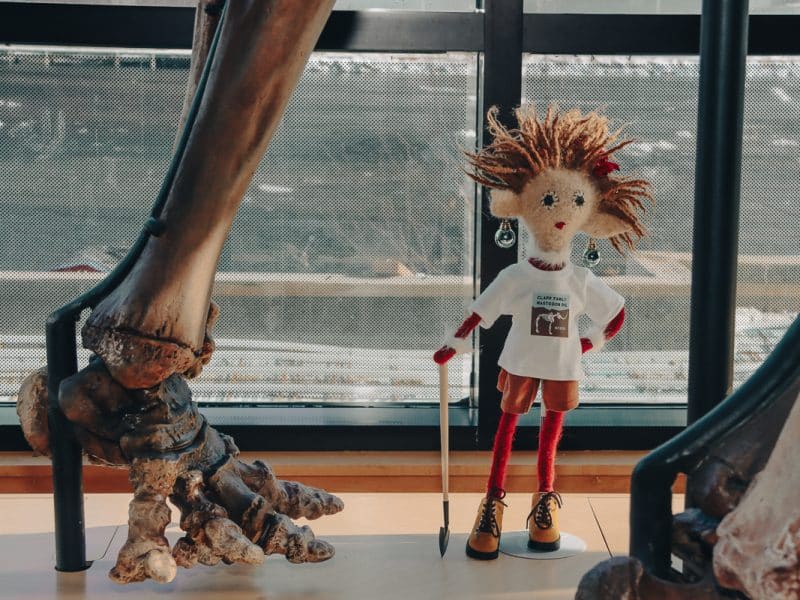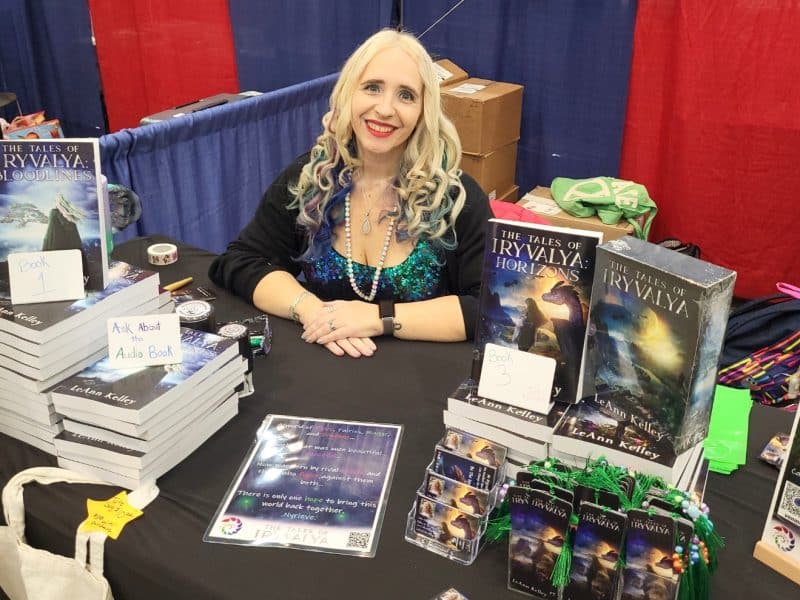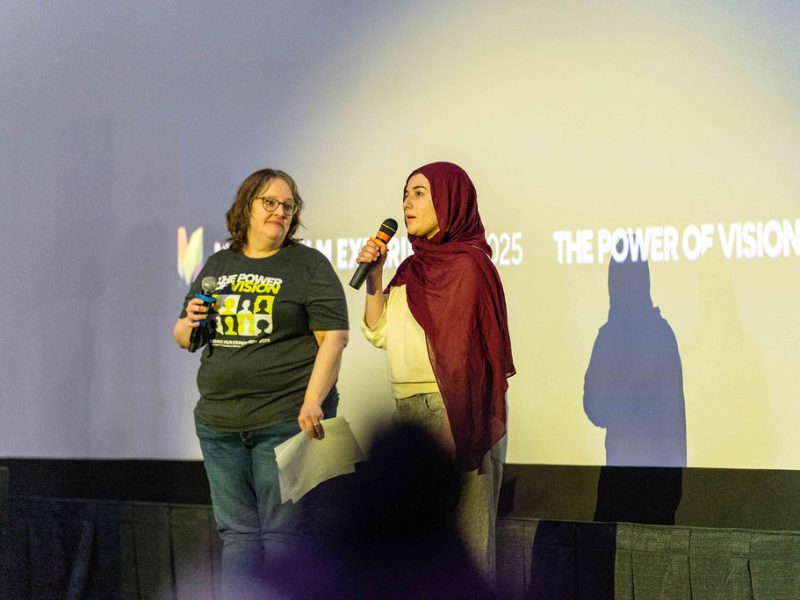One beat at a time: Brandon Copeland and the creative heart of community-building
Brandon Copeland has dedicated 20 years to demonstrating how artists can inspire community, culture, and the future of Grand Rapids, from DIY hip-hop shows to his live-work storefront, Grammotones.
Brandon Copeland has been influential in shaping the creative landscape of Grand Rapids for almost 20 years. Originally from Jackson, he moved to Grand Rapids in 2003 to attend Grand Valley State University, coinciding with Governor Jennifer Granholm’s launch of the Cool Cities initiative.
The program aimed to revitalize downtown areas, attract talent to cities, and promote a relatively new idea: creative placemaking as an incubator for advancement. The state’s leadership supported this investment effort with vital grants and access to a toolbox of opportunities for mixed-use developments, cultural districts, and live-work spaces for artists.
On South Division Avenue in Grand Rapids—a stretch where years of investment had stalled or fallen short—the state’s new initiative established the foundation for essential infrastructure, which eventually developed into Dwelling Place’s Avenue for the Arts.
Once a sanctuary for artists and the LGBTQ+ community due to its affordable rents and raw loft spaces, the corridor enabled Copeland to establish himself and develop his roots. Through numerous creative experiments, he crafted his vision of a functional space in Grand Rapids, ensuring it remained true to the needs of subcultures and the counterculture and facilitated the fostering of new ideas, potentially reaching a broader audience.
However, things didn’t always go smoothly at first, and Copeland, a young outsider trying to break into the scene, quickly understood how difficult it could be.

Brandon Copeland taking a moment to merchandise Grammotones.
“As an outsider, nobody would book me,” Copeland says. “So I just started booking my own stuff. I actually got my start here on Division (at the original home) for the DAAC, throwing our own parties.”
This DIY mindset has shaped Copeland’s career. Whether he’s performing as hip-hop artist Dante Cope, playing in the band Le Créatif, or co-founding the countercultural venue Death House, he continually creates spaces where artists can experiment—and sometimes flourish—when mainstream opportunities are lacking.
The artist as placemaker
South Division Avenue has historically served as a testing ground for revitalization led by artists. Before it was known as the Avenue for the Arts, early initiatives, such as the Free Radical Gallery – founded in 2000 by artists Mark Rumsey (Wealthy Mainstreet Program) and later supported by Annamarie Buller (now with Lions & Rabbits) and Jenn Schaub (now with Dwelling Place) – paved the way for creative expression in a district typically challenged by conventional investments.
From his perspective, Brandon Copeland recognized the recurring pattern of cities viewing artists as catalysts but failing to establish systems to support them.
While Cool Cities enabled progress to take hold, an unexpected pattern emerged when COVID-19 disrupted daily routines and prompted artists worldwide to rethink their working methods and access to locations traditionally open to them.
For Copeland, this disruption that started in 2020 prompted the artist to imagine and speed up the development of Grammotones.
From Death House to Grammotones
Copeland gained his early experience at Death House, a countercultural venue he co-managed after learning it was facing closure.
“The founders of Death House said they couldn’t afford it anymore. It was only $600 a month,” Copeland says. “So (Brandon) Sykes and I jumped in and ran it for the next four years.”
The venue was a crucible for punk, hip-hop, dance, and experimental music.
“Our thing was, if it could be played at the Pyramid Scheme, we didn’t want it,” says Copeland, explaining that more mainstream acts had access, whereas counterculture often did not. “We wanted music that didn’t get played anywhere else.”
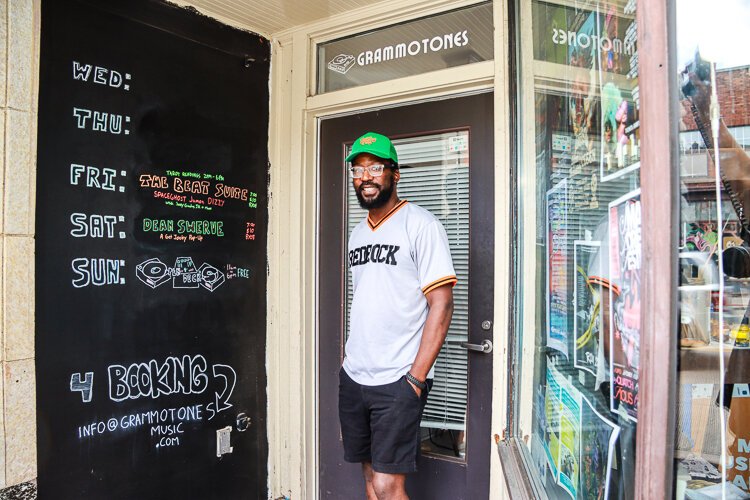
At Grammotones, analog is a creative thread to community.
The lessons in counterculture and community ultimately merged at Grammotones, Copeland’s storefront located at 112 S. Division Ave., where fashion, music and community-building intersect. Although the shop was initially scheduled to open in 2027, the space opened in 2024, earlier than planned after the pandemic, when Retail Innovation Grants were accessible.
“Richard App, retail retention and attraction specialist for the Grand Rapids Area Chamber of Commerce, hit me up and was like, ‘Hey, the city has grants,’ Copeland says. “So there’s this money, it’s post-COVID, and the city was trying to revamp this neighborhood. And while I had told people I was planning Grammotones to open in 2027, these grants accelerated my timeline because of the environment being right for such a move.”
Grammotones is more than a shop; it’s also Copeland’s home.
“Living here gives me flexibility,” he says, sitting on a couch that is just steps away from his retail area. “In this space, I can live, run the shop, host events, and still create music. It’s all interconnected.”
This model of integrating living spaces with storefront studios was initially launched on Division Avenue as part of the Cool Cities initiative. It remains one of the most effective methods for cities to support sustainable creative lifestyles.
Mixing fashion, music, and community
Grammatones addresses a gap in Grand Rapids that Copeland identified.
“In other cities, music and fashion are intertwined. But here, the music scene didn’t have that—everybody kind of just dressed like Midwesterners,” he says with a laugh, motioning to the racks of one-of-a-kind clothing that line the shop. “So the goal was to fill that gap.”
The shop combines vintage fashion, local brands, and performance. For artists, it provides more than just exposure.
“A lot of bands here in Grand Rapids don’t have merch. Having a space where not only you can perform but also sell your merch – not just the day of your show but forever – was one of the goals,” Copeland says.
“We host special events on the weekends, or welcome the community via our regular programming, Open Decks on Sundays,” Copeland says. “And it’s not just commerce—it’s community in the space with the opportunity for commerce.”
Venues such as Spot Lite Detroit in that city’s Islandview neighborhood vividly exemplify Copeland’s concept: functioning as a coffeehouse, record shop, and coworking space by day, and transforming into a gallery, bar, and music venue at night. This setup allows fans to explore its extensive record collection during performances and make purchases they can easily pick up before heading home or to an after-party. Notably, similar to Grammotones, Spot Lite Detroit also launched during the COVID-19 pandemic.
Grants and the economics of sustainability
Grand Rapids’ Retail Innovation Grant reduced Copeland’s rent by 50% for 18 months, providing Grammotones with a vital early advantage.
“Right now, we’re past the grant period. We’ve been back to full rate for like five months,” he says. “Most businesses don’t turn a profit for three to five years. So if grants only last 18 months, how does one expect places like this to survive?”
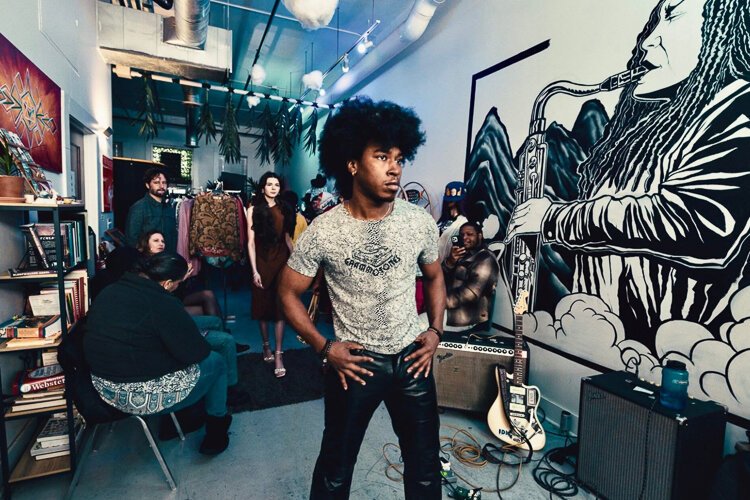
Fashion is part of the allure at Grammotones
For Copeland, who also is the Arts + Tech program director at the West Michigan Center for Arts and Technology, the answer isn’t endless subsidies but rather reimagining investments that offer midlevel support—particularly access to knowledge and practical tools.
“I feel like grants are great for startups, but what’s really needed is coaching. Things like: this is how you file taxes, this is payroll, this is how you scale. That’s more important than just throwing money at you,” he says.
Community-building requires space to breathe
Culture develops gradually, and Copeland avoids the push for hype-driven “swarm” moments.
“If things are embedded into the culture, you don’t touch it—you let it build,” He describes his Sunday Open Decks gatherings, where an eclectic group of DJs and music enthusiasts come together at the turntables, leading to surprising and often exciting moments of creative synergy. “Now DJs are doing shows with each other outside of here, and that’s the goal: collaborations that build.”
Grammotones has become a vibrant hub hosting diverse events such as hardcore punk shows, hip-hop, and house music. Copeland has also recorded more than 70 live performances in this space. This emerging archive highlights the importance of these spaces for their creative and social contributions.
“Community here looks like everybody vibing together,” Copeland says. “Whether you’re playing avant-garde vinyl, moshing at a hardcore show, or selling handmade jewelry or ceramics, that’s the creative culture we’re building here at Grammotones.”
Copeland aims not for replication, but for recognition from Grammotones’ model.
“People are experts in their own culture,” he says. “It’s not about importing something artificial. If you find people who like what you like, that’s how culture gets built. The business should form around that.”
This philosophy harks back to the Avenue for the Arts’ early days, when artists transformed abandoned storefronts into something fresh, creating a roadmap along the way via their travels over time, which cultural buildings require to take root. Copeland continues that tradition in a way that is both intimate and broadly educational.
Looking ahead
When asked to look into a crystal ball for insights to share, Copeland is pragmatic.
“I have a five-year plan that changes every year,” he says. “I’d like Grammotones to be like Supreme—a brand people know—but still small and authentic. If I expand, I’d rather have multiple small spaces than one giant one. Small spaces build culture.”
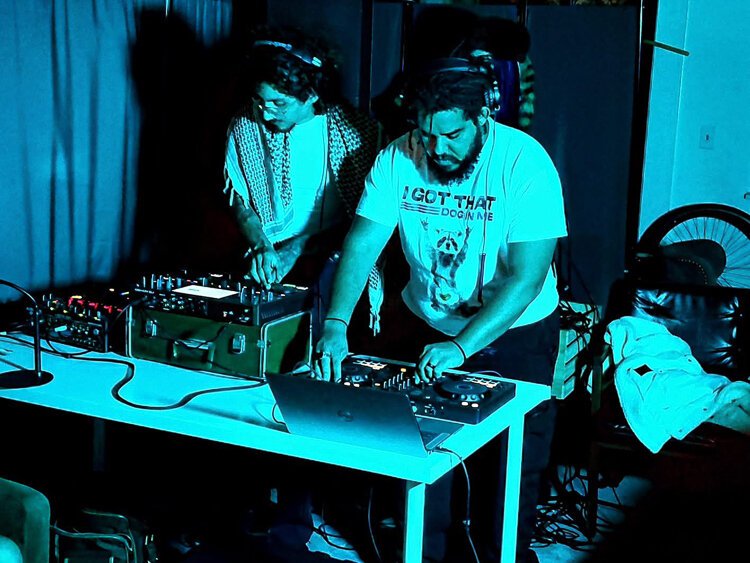
Sunday Open Decks offers opportunities for creative collisions to erupt.
In cities like Grand Rapids, the challenge is evident: although substantial investments have helped foster creative industries, the next step is to go beyond just startups. The future hinges on integrating more artists into leadership positions because they—working locally—know why placemaking needs fresh strategies that support these critically vital cultural incubators. This approach is crucial for these community spaces to thrive in the long term.
As Copeland puts it, “You have to build the culture first—that’s what’s going to keep it sustainable.”
Photos of Brandon Copeland by Tommy Allen, except event images, which are courtesy of Grammotones. The mural artist presented within Grammotones space is George Eberhardt.
This story series is made possible through the support of Dwelling Place, a nonprofit housing leader committed to building inclusive, resilient communities. Through this partnership, Rapid Growth Media explores how local solutions to housing, equitable access, and creative placemaking can shape broader national conversations from West Michigan.

